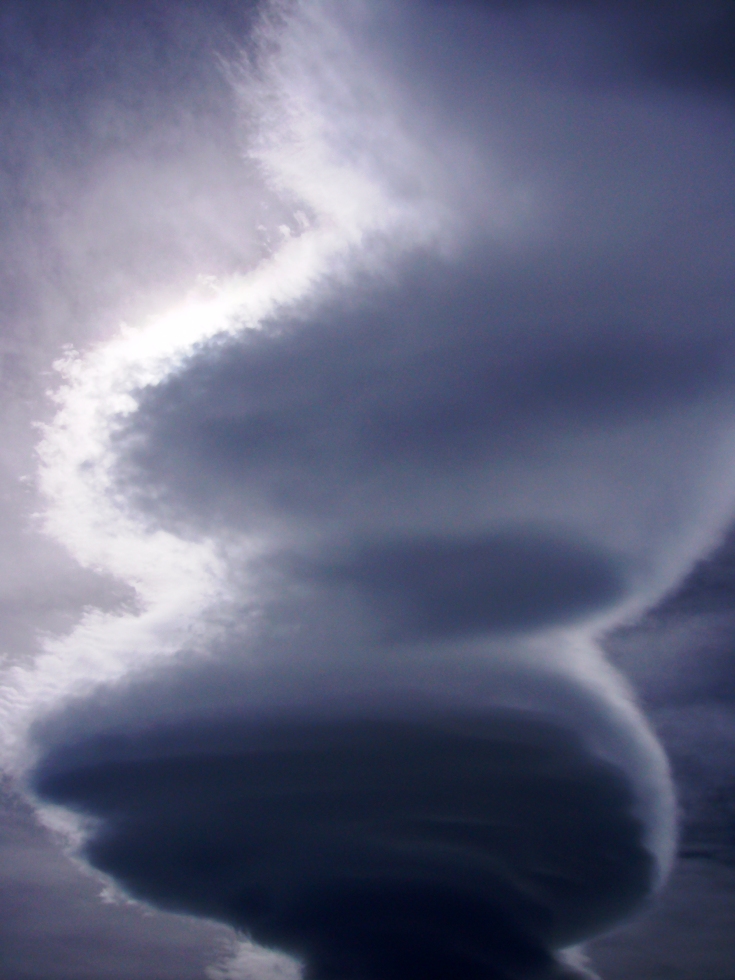
Cyclone Phailin was packing gusts as high as 240 kilometres per hour and had the potential to be the strongest storm to hit the area in 14 years, bringing a three-metre surge in sea levels.
High winds and heavy rain were already lashing the state of Orissa and neighbouring Andhra Pradesh, where trees were bent double several hours before Phailin was due to make landfall.
The cyclone is set to hit the same coastal area dotted with flimsy huts and shanties as a storm in 1999 that killed more than 8,000 people.
The Indian Meteorological Department issued a so called "red message" warning of the "very severe" cyclone's impending arrival.
The US Navy's Joint Typhoon Centre said gusts could reach as high as 315 kilometres an hour, while London-based Tropical Storm Risk put Phailin in its most severe "super cyclone" category.
The armed forces have been mobilised to help with relief efforts and the Indian Red Cross Society has put disaster response teams on standby in Orissa, Andhra Pradesh and Andaman Nicobar.
The Orissa government said it was setting a "zero casualty target" in the state of close to 40 million people and was seeking "100 percent" evacuation of people in the worst-affected areas.
Special relief commissioner for Orissa, Pradipta Mohapatra, told AFP that 250,000 people had already been moved out of harm's way.
Satellite photos showed an intimidating cloud mass barrelling across the Bay of Bengal with forecasters saying the danger zone was about 150 kilometres (90 miles) wide.
In Orissa's capital, panic buying saw many shops run low on food.
The 1999 cyclone had higher wind speeds and a larger storm surge - six metres - than being currently predicted by the Indian weather office.
Some foreign forecasters have suggested that India's weather office is underestimating the power of Phailin, however, which means "sapphire" in Thai.
A government report on the 1999 disaster put the death toll at 8,243 and said 445,000 livestock perished.
Authorities have said they are better prepared this time around.
Cyclones are a common occurrence in the Bay of Bengal at the end of the steamy monsoon season, when sea temperatures are at their warmest.
A cyclone that struck Bangladesh in 1970 killed hundreds of thousands of people.
COMMENTS (5)
Comments are moderated and generally will be posted if they are on-topic and not abusive.
For more information, please see our Comments FAQ





1732354127-0/Untitled-design-(3)1732354127-0-270x192.webp)


1732344836-0/BeFunk_§_]__-(37)1732344836-0.jpg)








Hope world is watching the way India is dealing with this cyclone. Reporters from all Indian TV channels are covering it live from the very epicenter of cyclone. Every aspect is being discussed and steps are being taken to ensure that people are taken care of. Even animals are being taken care of. Veterinary doctors are also on standby. It will be worth reviewing the rebuilding part after the cyclone is over.
Hey cyclone or not , great to hear something positive about Ind in your columns .
yes,,,this time,,,rescue operations and every thing is far better than 1999,,,hope ,,every one will be safe in this festive season!!!!!
Seriously speaking..I appreciate Indians as they have told the public on 9th i.e. three days before the cyclone and more than 20lakh people have been evacuated to safe places..Good disaster management this time....Like i think we have learnt a great deal from uttrakhand tragedy...good going...
This cyclone is going to be as strong as Katrina. Watch out the preparation of India vs US. Analyze the effects and management post cyclone. India is going to handle it most effectively. Entire nation is ready to face it. If Indian can manage it to the level of zero casualty as stated, world will certainly take a note of Indian capabilities of handling disasters of this magnitude.